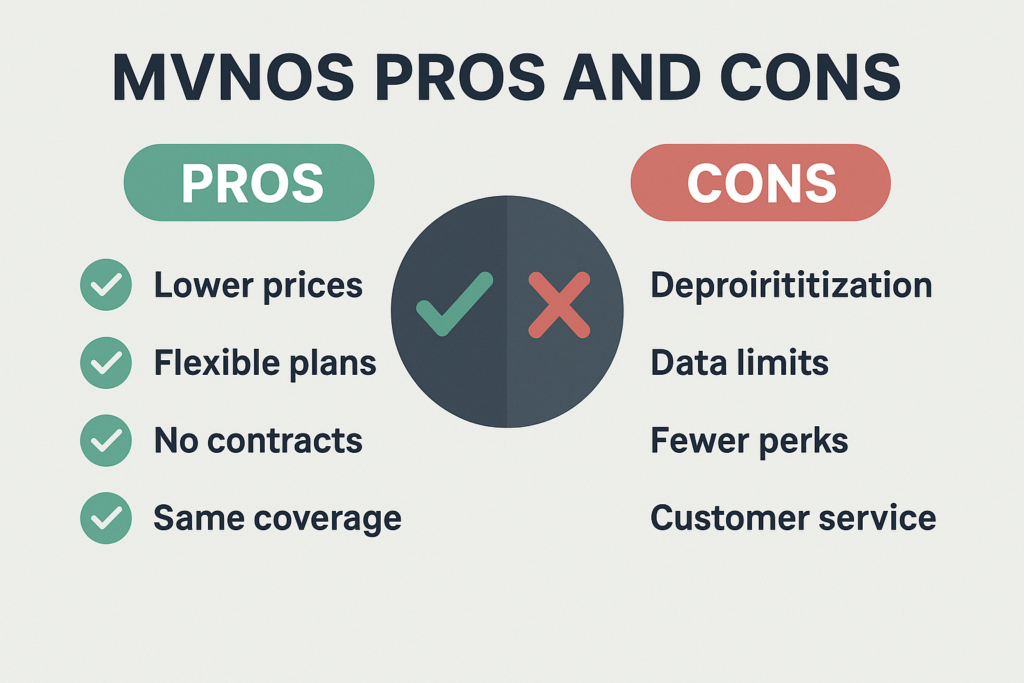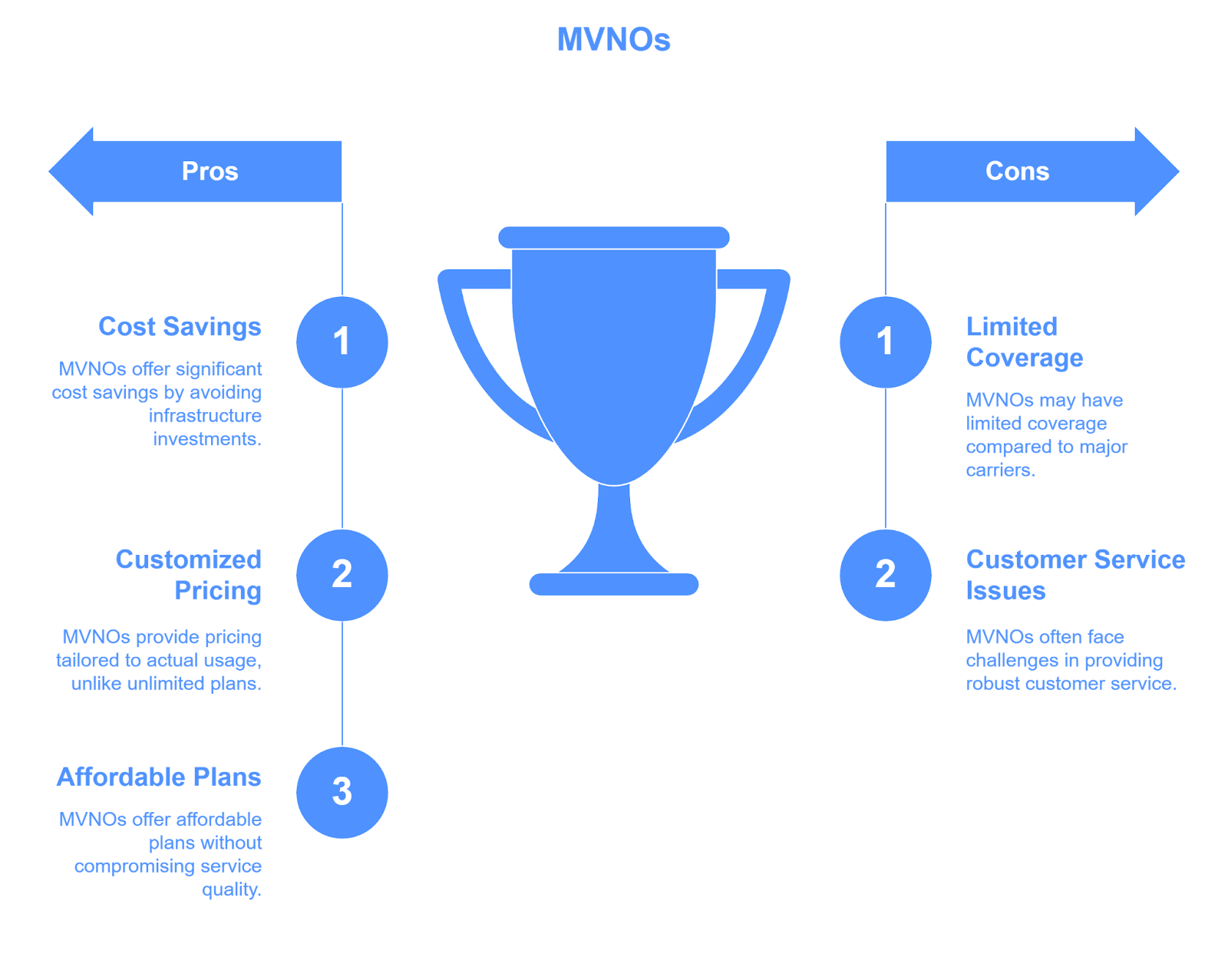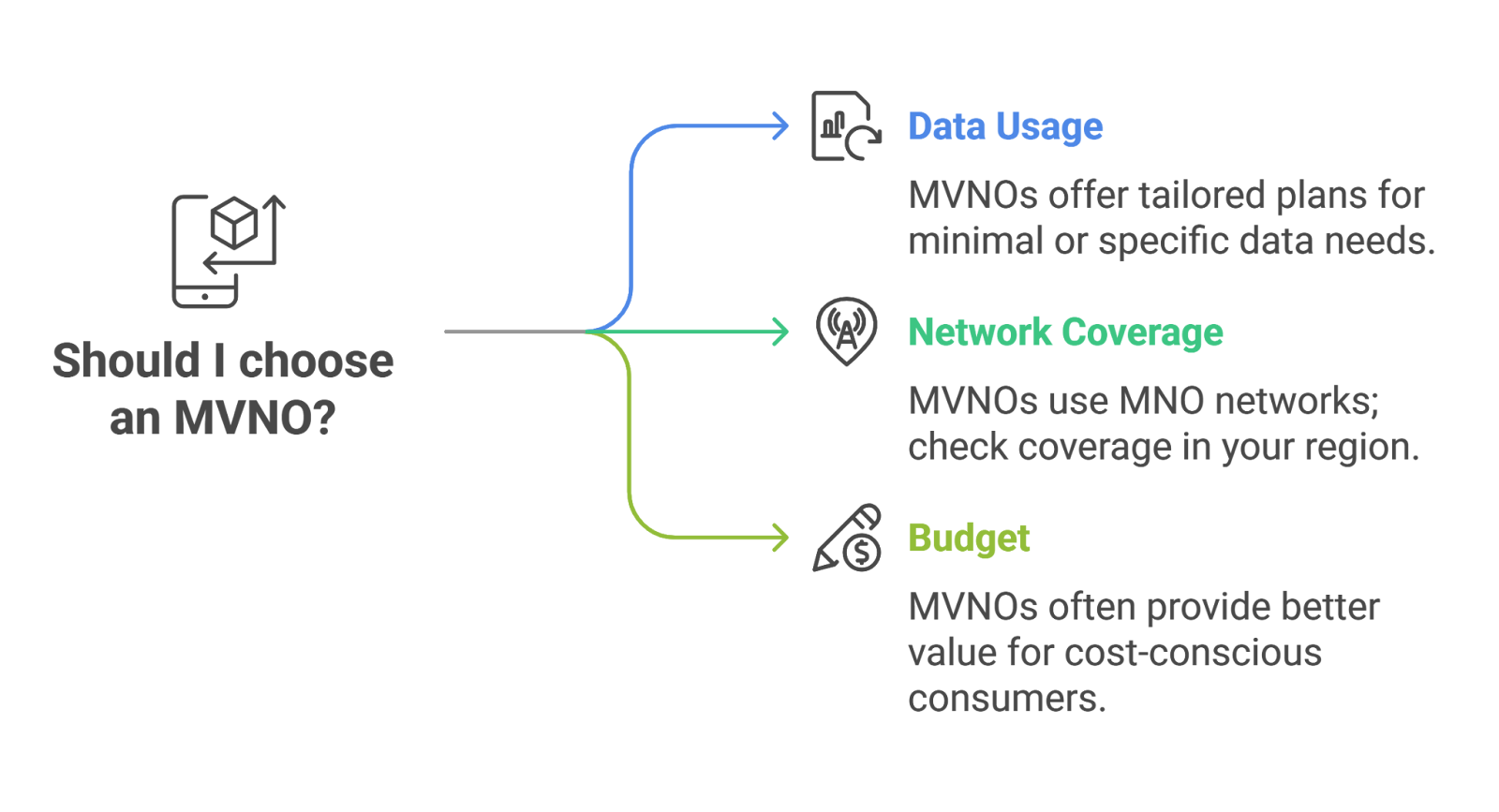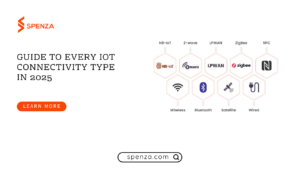Table of Contents
- Understanding MVNOs: The Basics
- MVNO Benefits for Consumers
- Cost Savings: Affordable Plans Without Compromise
- Flexibility and Customization: Plans That Fit Your Lifestyle
- Access to Major Networks: Reliable Coverage You Can Trust
- Improved Customer Service (Often)
- Innovation: Unique Bundling and Experiences
- MVNO Disadvantages for Consumers
- Potential for Network Deprioritization
- Limited Physical Store Presence
- Fewer Perks and Bundles
- MVNO Customer Service Quality Varies
- Complex Problem Resolution (Rare)
- Making an Informed Choice: Is an MVNO Right for You?
- How Spenza Helps MVNOs Deliver Better Consumer Experiences
- Conclusion: The Evolving Landscape of Mobile Choices
- FAQs

Understanding MVNO pros and cons from a Consumer Perspective
The world of mobile connectivity today is far more diverse than simply choosing between a handful of major carriers. As consumers become more aware of alternative options, Mobile Virtual Network Operators, commonly known as MVNOs, have stepped into the spotlight. They’re not just a fringe trend; they’re redefining how mobile services are accessed and tailored to individual user needs.
So, what is an MVNO? In simple terms, an MVNO is a wireless service provider that doesn’t own the wireless infrastructure it uses to deliver mobile services. Instead, MVNOs lease network access from established carriers like Verizon, AT&T, or T-Mobile. With this arrangement, MVNOs can offer their own pricing, features, and customer support, often at lower costs and with more tailored plans.
MVNOs cater to a wide variety of consumers, from tech-savvy users who prefer pay-as-you-go models to remote workers or IoT users with specific connectivity requirements. In fact, The U.S. Mobile Virtual Network Operator market size is estimated at around USD 14.83 billion in 2025, with projections to grow to USD 20.84 billion by 2030 at a CAGR of 7.04%. This reflects the rising adoption and market expansion of MVNO services in the U.S.
This article is designed to help you fully understand the MVNO pros and cons. If you’ve ever wondered things like “What’s the downside of using an MVNO?” or “Are MVNOs worth it?” or “Is MVNO good for consumers?”.
MVNO Benefits for Consumers

1. Cost Savings: Affordable Plans Without Compromise
The cost savings MVNO offers is notable. Because MVNOs do not have to invest in building or maintaining cell towers or other network infrastructure, their operating costs are significantly lower than those of traditional carriers. This allows them to pass savings directly on to consumers in the form of affordable and cheap mobile plans.
According to a 2025 report by WhistleOut, MVNO plans in the U.S. can cost up to 50% less than comparable major carrier plans, with average monthly savings ranging between $15 to $40 depending on usage and plan type.
This cost-effectiveness is a key reason many consumers are switching to MVNOs, as detailed in Spenza’s overview of MVNO advantages and best options for users.
Customized Pricing for Real-World Usage
Unlike major carriers that often push unlimited plans including niche mobile plans, even when users don’t need them, MVNOs excel at offering pricing that reflects actual usage. Whether you’re a light data user who just wants talk and text, or someone who uses multiple smart devices but with limited data needs, MVNOs typically have a plan for you. That’s a core point in any honest discussion of MVNO pros and cons
2. Flexibility and Customization: Plans That Fit Your Lifestyle
In contrast to the one-size-fits-all approach often seen with major carriers, MVNOs shine when it comes to offering flexible and customizable plans.
MVNOs frequently build specialized plans for:
- IoT devices like smartwatches and GPS trackers
- Travel SIM cards that support international roaming
- Industry-specific connectivity, such as remote worker packages or business bundles
This level of niche customization is something traditional carriers rarely offer. Whether you’re an international traveler, a remote freelancer, or a small business owner needing multiple lines with unique settings, MVNOs can offer tailored options to meet your exact demands with flexible data plans.
Contract-Free Freedom
Many MVNOs also offer no long-term contracts. With prepaid and pay-as-you-go options, users can switch plans, carriers, or devices without the burden of early termination fees or multi-year commitments. This flexibility makes MVNOs especially appealing to younger consumers, students, digital nomads, or anyone who wants to avoid getting locked into long-term commitments. It’s one of the key aspects covered when comparing MVNO pros and cons.
3. Access to Major Networks: Reliable Coverage You Can Trust
A common misconception is that choosing an MVNO means settling for inferior network quality & coverage. In reality, most MVNOs operate on the very same networks used by the largest carriers in the United States. That means, whether you’re using an MVNO that relies on Verizon, AT&T, or T-Mobile, your coverage is largely comparable to what their direct customers experience.
Of course, the performance can vary depending on the specifics of your plan and location, but for the majority of users, MVNOs offer reliable service backed by well-established network infrastructure.
4. Improved Customer Service (Often)
Amongst the underappreciated MVNO benefits is customer service, especially when compared to the sometimes bureaucratic and impersonal service experiences offered by big telecom providers. In fact, the discussion around MVNO pros and cons frequently touches on service quality, with many MVNOs offering highly personalized and user-friendly support.
Niche Focus = Personalized Support
MVNOs tend to serve more targeted customer segments, which enables them to offer personalized and attentive service. Whether the MVNO specializes in connected devices, niche communities, or specific geographic markets, the support staff often have a deeper understanding of your unique needs.
This specialized focus can make a significant difference when you’re troubleshooting a problem or looking for plan recommendations that best suit your lifestyle.
5. Innovation: Unique Bundling and Experiences
MVNOs are known for pushing boundaries and exploring creative bundling strategies that traditional carriers may not prioritize.
Examples of MVNO Innovation:
- Bundles that combine device purchases (e.g., smartwatches or tablets) with connectivity services
- Mobile plans tailored for communities, such as student discounts, senior citizen plans, or nonprofit bundles
- White-label MVNO services, allowing organizations to offer branded mobile experiences under their own names
These innovations not only provide consumers with more choices but also foster a more personalized and relevant user experience. Innovation plays a significant role in the MVNO pros and cons analysis, especially when unique plans and bundling give consumers more control and variety. Platforms like Spenza facilitate such innovation by enabling businesses to become full MVNOs with control over pricing, billing, and customer experience.

MVNO disadvantages for Consumers
While MVNOs offer numerous benefits, there are potential downsides to be aware of. These challenges may not apply to all MVNOs, but understanding them will help you make an informed decision.
1. Potential for Network Deprioritization
During periods of high traffic, MVNO users may experience slower data speeds due to network deprioritization. This means that when the network gets congested, customers who are subscribed directly with the main carrier might be prioritized over MVNO customers. In fact, according to the research company, Tutela, who analyzed 240 billion network measurements from 2.8 million handsets in the U.S., state that MVNOs can be up to 23% slower than the original network.
However, it’s important to note that this issue depends heavily on the agreement between the MVNO and its host carrier (the MNO). Some MVNOs negotiate better terms to reduce or eliminate this kind of deprioritization, so it’s worth researching the specifics of each MVNO. Understanding this trade-off is crucial when exploring MVNO pros and cons in depth.
2. Limited Physical Store Presence
Considerations Around MVNO Customer Support:
- Most MVNOs operate primarily or entirely online, with no physical retail locations
- Support is typically offered through phone assistance, live chat, or email-based ticket systems
- Lack of in-person service may be a drawback for customers who prefer face-to-face support
While many MVNOs provide fast, effective online support, the lack of in-person assistance may be a drawback for those who value face-to-face service. It’s another important aspect to weigh when considering MVNO pros and cons.

3. Fewer Perks and Bundles
Limited Lifestyle Perks with MVNO Plans:
- Focus is often on core mobile services, with fewer value-added extras
- Lack of free subscriptions to platforms like Netflix or Disney+
- Limited or no access to sports packages or exclusive live content
- Few options for built-in international roaming
- Rarely offer device financing with 0% interest over extended terms
While some MVNOs are beginning to add competitive perks, most still lag behind in this area.
4. MVNO Customer Service Quality Varies
Although some MVNOs are known for excellent customer service, not all live up to expectations. This is amongst the major MVNO disadvantages. Because MVNOs range from niche startups to well-established providers, the quality of support can differ widely.
Before signing up, it’s a good idea to check third-party reviews, explore community forums, and confirm the provider’s track record for customer support responsiveness. Variability in service is another common topic when weighing MVNO pros and cons.
5. Complex Problem Resolution (Rare)
In rare situations, particularly when technical problems arise that require access to core network systems, MVNOs may need to act as intermediaries between the customer and the underlying network provider. This can lead to delays or additional back-and-forth communication.
That said, these complex scenarios are relatively uncommon and generally resolved through the MVNO’s existing support process. For everyday users, this is unlikely to be a regular concern.
Making an Informed Choice: Is an MVNO Right for You?
Still not sure if an MVNO fits your lifestyle? Here’s a quick breakdown of how to evaluate your options and understand the MVNO pros and cons that align with your priorities:
| Factor | Consideration |
|---|---|
| Your Data Usage | If you use minimal or very specific amounts of data, MVNOs offer tailored plans at better rates. |
| Network Coverage | Check which MNO the MVNO uses, and confirm that carrier’s coverage in your region. |
| Budget | If you’re cost-conscious, MVNOs often offer far better value for money. |
| Support Preference | If in-store assistance is important, MVNOs might fall short. Otherwise, digital support is generally effective. |
| Special Requirements | If you use connected devices, travel frequently, or have niche needs, MVNOs often excel at serving these segments. |
Tip: Websites like WhistleOut, Wirefly, and BestMVNO allow you to compare MVNO plans, read reviews, and sort by features that matter most to you.

How Spenza Helps MVNOs Deliver Better Consumer Experiences
Behind the scenes, the MVNO ecosystem is rapidly evolving, thanks in part to companies like Spenza, a Mobile Virtual Network Enabler (MVNE). These platforms help MVNOs compete more effectively by managing operations, billing, and network access.
How Spenza is Transforming the MVNO Experience:
- Operator-Neutral Access: MVNOs using Spenza can tap into multiple major networks, enhancing negotiation power and minimizing network deprioritization
- Custom Mobile Plans: Real-time plan assignment and usage-based billing let MVNOs tailor offerings precisely to consumer needs, down to the megabyte
- Simplified Billing & Operations: Spenza unifies billing, data usage tracking, and network management into a single, streamlined system
- Branded Experiences: MVNOs can build unique branded ecosystems, delivering personalized mobile experiences that stand out in the market
Conclusion: The Evolving Landscape of Mobile Choices
After weighing the virtual network pros and cons, it is easy to evaluate that MVNOs are no longer just a cost-cutting option. Today’s MVNOs offer a full range of innovative, flexible, and consumer-friendly services that rival and sometimes surpass those of traditional carriers.
While they come with a few trade-offs, especially regarding perks or physical support centers, their advantages in pricing, customization, and network access make them highly appealing to modern mobile users.
As platforms like Spenza continue to enhance the MVNO ecosystem, consumers can expect even more personalized, affordable, and reliable mobile service options in the future.
Learn more about how MVNOs are reshaping mobile connectivity and explore the best options for 2025 on Spenza’s detailed guide. Take the next step toward smarter mobile choices today!
FAQs
The most common downsides include possible network deprioritization during high-traffic periods, limited in-store support, fewer bundled perks, and varying levels of customer service.
Problems may include slower data speeds in congested areas, less access to in-person customer service, and occasional delays in resolving complex issues due to the intermediary role MVNOs play.
Key disadvantages include dependency on host carriers, occasional deprioritization, lack of control over infrastructure, and generally fewer premium perks.
The biggest benefits include cost savings, customized plans, reliable access to major networks, potential for better customer service in niche markets, and ongoing innovation in mobile services.
Spenza offers a comprehensive Telecom as a Service (TaaS) platform that enables businesses to manage mobile connectivity, including IoT and eSIM devices, through a unified dashboard. Their services include access to a multi-operator marketplace for sourcing mobile plans, custom plan creation, automated SIM and eSIM inventory management, billing automation, and real-time monitoring of telecom expenses.
Spenza helps businesses cut telecom costs by streamlining mobile plan management and providing cost optimization tools.
Explore Spenza’s innovative MVNO solutions today. Request a free demo now!





